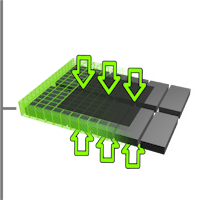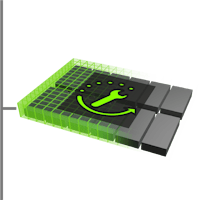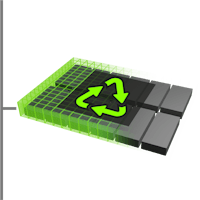
Driving Electrification! Battery housings for the future
Together with a leading TIER1 automotive supplier you can become a pioneer and tackle one of the main challenges of the automotive industry.
Its up to you: Can you come up with innovative ideas and approaches
to optimize current battery housings?
✅ 🏁 Congrats to Pingala, RoyalMech and Leyden Jar, great effort!🏆 €15.000 + further cooperation opportunities
Status Quo
Due to the change of customer demands towards more sustainability and green energy, the automotive industry has to rethink its production, distribution and products. The trend of ecological sustainability tempts suppliers and OEMs to actively take their responsibility throughout the entire production and usage cycle of an automobile.
Therefore, more and more manufacturers are expanding their product portfolio towards Battery Electric Vehicles (BEVs).
But for this technology to become established in the long-term, it is important to overcome current challenges: Today, there is an urgent need for innovation regarding cost and price efficiency, range, charging times or durability.
In this context, besides the well-known innovation efforts about the battery itself, there are also other challenges that have a major impact on the whole success of the technology shift, which leads us to the core topic of this challenge:
The efficient integration of the battery into the vehicle, or even more specific: The battery housing.
Challenge
The battery housing is one of the most important components for safety and longevity of the battery in an electric vehicle.
Currently, there are different approaches and concepts available on the B2B markets, but because of the low stage of maturity and the fast implementation of electric engines, no specific standard-type of battery housings has been established yet.
This is where you come in: A leading TIER 1 automotive supplier is challenging you to come up with innovations towards the battery housing of the future.
Tracks
The company already produces these battery housings in series and identified three different main pain points along the whole product life cycle where you can develop your ideas and approaches.
Important: Further background information, boundary conditions to a housing, e.g. regarding crash safety or tolerances as well as guiding questions can be found in the tabs Background Information and Submission.
Also keep in mind: It is not necessarily required to develop an overall concept for a battery case. In the first phase, innovations for the sub-areas mentioned below are also of big interest!

Tightness
One of the most important requirements for the battery housing is its tightness.
It is extremely important that no external substances such as splash water get in contact with the battery cells. Furthermore, it is essential that in case of a malfunction of the battery packs or during a crash that the housing prevents the environment from electrolyte leaking out of the battery! Otherwise, chemical reactions can lead to risks for the driver and surrounding people.
This in mind: Could you create new ideas and approaches to optimize the tightness of battery housings? What are the risk points in terms of tightness? Which materials and manufacturing processes should be used? Can auxiliary materials and processes such as adhesives or screws be optimized?

Repair and Maintenance
In order to ensure the longevity and efficiency of a battery, it must be possible to service, maintain or - if necessary - repair the battery during its entire life cycle.
In this case, the housing must allow easy access to the battery for inspection or repair as well as secure and efficient and reliable resealing.
This in mind: What does the concrete journey from opening to reclosing look like for a mechanic? Where do problems occur? How can the design of a housing be optimized in this regard? How can quick but still reliable tests be used to ensure the tightness of an enclosure right in the garage?

Sustainability
Electrification of automobiles can help to get to a more sustainable way of mobility. But what about the batteries and the battery housing itself after the lifetime of the car is over?
Develop ideas in which way the battery housings can have a useful second life. Can the components of your battery housing design be disassembled easily to recycle the different materials?
To summarize it: No matter if you are a student, a researcher, a new team or a startup: Until the 14th of September, your task is to come up with an innovative approach towards the battery housing of a BEV to help this technology succeed in the long-term!
© 2018- 2025 ekipa GmbH. All rights reserved.